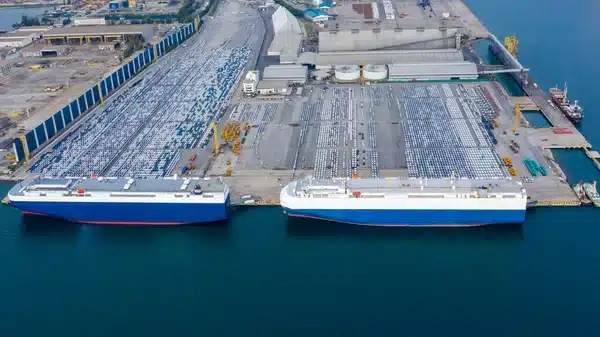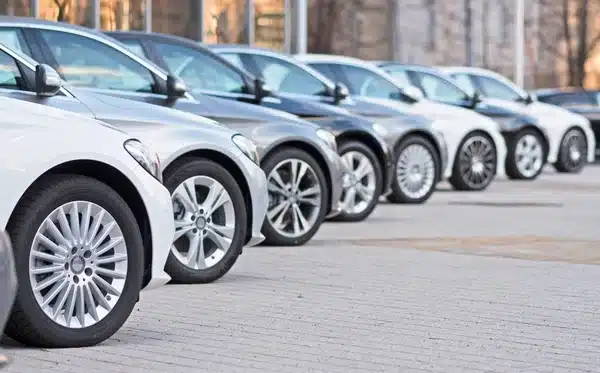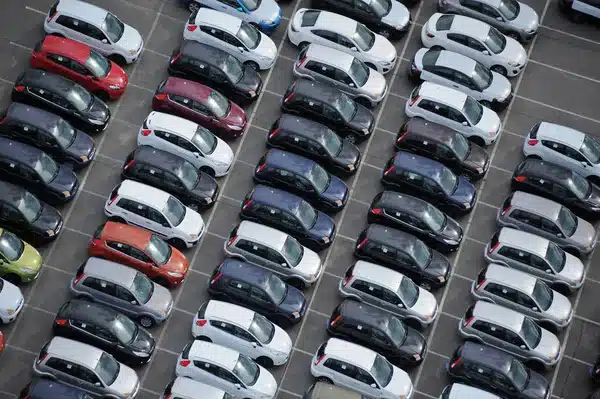Shipping used cars from China to other countries is becoming increasingly popular, particularly for businesses looking to diversify their car inventory or individuals interested in finding affordable vehicles. China is not only the world’s largest automotive market but also a hub for diverse vehicle models, ranging from budget-friendly economy cars to premium luxury vehicles. Many international buyers are attracted by the competitive prices and the wide selection of available models. Additionally, China’s advanced automotive manufacturing and refurbishment capabilities ensure that many used cars meet high standards in terms of quality and reliability.
With the growing demand for used vehicles worldwide, China presents a lucrative opportunity for importers looking to acquire well-maintained cars at attractive prices. However, the process of importing used cars can be complex, involving numerous regulations, logistics arrangements, and cost considerations. To ensure a successful shipping experience, it’s crucial to understand the requirements and best practices involved.
This guide will provide a comprehensive overview of the entire shipping process for used cars from China, covering everything from selecting the right vehicle and understanding the regulations to choosing the best shipping method and calculating costs. Whether you are an importer, car dealer, or an individual buyer, this guide will help you understand how to ship used cars from China smoothly and efficiently. China is home to a wide variety of car models, ranging from economy cars to luxury vehicles, making it an attractive market for car importers around the world. However, navigat ing the shipping process can be challenging without a proper understanding of the requirements, costs, and logistics involved.
This guide will provide a comprehensive overview of the entire shipping process for used cars from China, covering everything from selecting the right vehicle and understanding the regulations to choosing the best shipping method and calculating costs. Whether you are an importer, car dealer, or an individual buyer, this guide will help you understand how to ship used cars from China smoothly and efficiently.

Table of Contents
Understanding Regulations for Shipping Used Cars from China
Before shipping a used car from China, it is essential to understand the regulations governing the export and import of vehicles. Each country has its own specific requirements, and failure to comply with these regulations can lead to delays or fines.
1. Export Regulations in China
In China, exporting used cars is regulated to ensure that vehicles are in good working condition and are suitable for export. Key requirements include:
Vehicle Inspection: Used cars must pass a quality inspection before they are approved for export. This includes checking the condition of the engine, brakes, lights, and other critical components to ensure the car is roadworthy.
Documentation: Exporters need to provide all necessary documents, including the Certificate of Origin, Export License, and a Bill of Sale. These documents must be accurately completed and approved by the relevant authorities.
2. Import Regulations in the Destination Country
Each destination country has its own rules for importing used cars, which may include:
Age Restrictions: Some countries impose age limits on imported used cars. For example, vehicles older than 10 years may not be allowed in certain regions.
Emission Standards: Many countries have specific emission standards that imported cars must meet. It is crucial to verify whether the car complies with the required environmental regulations.
Customs Duties and Taxes: Importers are usually required to pay customs duties, taxes, and other fees upon the arrival of the car. The cost of these duties will vary depending on the country.

Choosing the Right Shipping Method
Selecting the right shipping method is crucial for ensuring the safe and efficient transport of used cars from China. There are two main methods for shipping vehicles: Roll-on/Roll-off (RoRo) and Container Shipping.
1. Roll-on/Roll-off (RoRo) Shipping
RoRo shipping is a cost-effective method for transporting cars. The vehicles are driven directly onto a specialized vessel and secured for the journey. This method is ideal for those who need a simple and economical solution for shipping used cars.
Pros: Lower cost, easy loading and unloading, no need for additional packing.
Cons: Limited protection from weather and potential damage during transit.
2. Container Shipping
Container shipping involves placing the car inside a 20ft or 40ft container for transportation. This method provides added protection against weather and potential damage, making it suitable for high-value or luxury vehicles.
Pros: Maximum security and protection, ability to include spare parts or other items in the container.
Cons: Higher cost, requires more preparation (such as securing the car within the container).
3. Choosing the Best Option
The choice between RoRo and container shipping depends on several factors, such as the value of the car, budget, and destination. For standard vehicles, RoRo is generally the preferred option due to its lower cost. However, if you are shipping an expensive or vintage car, container shipping is recommended for added safety.
Costs Involved in Shipping Used Cars from China
The cost of shipping used cars from China can vary depending on several factors, including the shipping method, destination, and additional fees. Below is a breakdown of the key cost components:
1. Shipping Costs
RoRo Shipping: The cost for RoRo shipping typically ranges from $800 to $1,500 per vehicle, depending on the destination port and the distance from China.
Container Shipping: The cost for container shipping is higher, generally ranging from $2,000 to $4,500 per container. If you are shipping multiple cars in a container, the cost per car may be lower.
2. Customs Duties and Taxes
Customs duties, import taxes, and other fees must be paid when the car arrives at the destination. These fees vary by country and are usually calculated based on the CIF (Cost, Insurance, and Freight) value of the vehicle.
3. Port and Handling Fees
In addition to shipping costs, there are also port handling fees, which cover the cost of loading and unloading the vehicle at the port. These fees typically range from $200 to $500 per vehicle.
4. Insurance
Insurance is highly recommended for shipping used cars to protect against potential damage or loss during transit. The cost of insurance is usually 1% to 3% of the car’s value.
Step-by-Step Guide to Shipping Used Cars from China
To help you understand the entire process, here is a step-by-step guide to shipping used cars from China:
1. Select the Car and Verify Its Condition
Start by selecting the car you wish to purchase and have it inspected to verify its condition. Ensure that the vehicle meets both Chinese export standards and the import regulations of the destination country.
2. Hire a Freight Forwarder
Working with an experienced freight forwarder like Tonlexing can simplify the shipping process. A freight forwarder will handle the logistics, including booking the shipping method, preparing documentation, and managing customs clearance.
3. Prepare Documentation
Prepare all necessary documents, including the Bill of Sale, Certificate of Origin, Export License, and any import permits required by the destination country. Your freight forwarder can help ensure that all paperwork is correctly completed.
4. Book the Shipping Method
Choose between RoRo or container shipping based on your budget and the value of the vehicle. Your freight forwarder will handle the booking and provide you with a shipping schedule.
5. Arrange for Vehicle Delivery to the Port
The car will need to be transported to the port of departure in China. Depending on the seller’s location, this may involve additional trucking fees. Your freight forwarder can arrange for the transportation of the car to the port.
6. Customs Clearance
Customs clearance is required at both the departure port in China and the destination port. Ensure that all documents are correctly filed to avoid delays. A skilled customs broker can assist with this process.
7. Track the Shipment
Once the vehicle is in transit, use the tracking information provided by your freight forwarder to monitor its journey. Knowing the estimated arrival time will help you plan for customs clearance and final delivery.
8. Receive the Vehicle
Once the car arrives at the destination port, you will need to arrange for customs clearance, pay any duties and taxes, and organize final delivery to your location. Depending on the country, you may need to work with a local logistics provider for last-mile delivery.

Tips for a Smooth Car Shipping Experience
Shipping used cars from China can be complex, but following these tips will help ensure a smooth experience:
1. Work with a Reliable Freight Forwarder
Partnering with a reliable freight forwarder like Tonlexing can make the process much smoother. Tonlexing has experience shipping vehicles internationally and can handle all the logistics on your behalf.
2. Verify All Documentation
Ensure that all documents are complete and accurate. Missing or incorrect paperwork can lead to delays and additional costs.
3. Plan for Additional Costs
Be prepared for additional costs such as import duties, taxes, port fees, and insurance. Understanding these costs upfront will help you budget effectively.
4. Consider Insurance
Always insure your vehicle for transit. Shipping involves several risks, and having insurance will provide peace of mind in case of any damages or losses.
How Tonlexing Can Help You Ship Used Cars from China
Tonlexing specializes in international vehicle shipping and offers comprehensive solutions to help you ship used cars from China efficiently and affordably. Our services include:
Freight Forwarding: We handle the entire logistics process, from booking the shipment to managing customs clearance.
Customs Brokerage: Our team ensures that all paperwork is correctly filed and that your shipment complies with both Chinese and destination country regulations.
Vehicle Inspection Assistance: We help arrange for the required vehicle inspections to ensure compliance with export standards.
Competitive Rates: With our established relationships with shipping lines, we can offer competitive rates for both RoRo and container shipping.
Contact Tonlexing today to learn more about our vehicle shipping services and get a customized quote for shipping used cars from China.
Conclusion
Shipping used cars from China involves understanding regulations, choosing the right shipping method, and managing costs effectively. By selecting a reliable freight forwarder, preparing the necessary documentation, and planning your shipment carefully, you can ensure a smooth and successful car shipping experience.
Tonlexing is here to assist you with all your vehicle shipping needs, providing tailored solutions to help you import used cars from China efficiently. Contact us today to find out how we can make your car shipping journey hassle-free and cost-effective.


